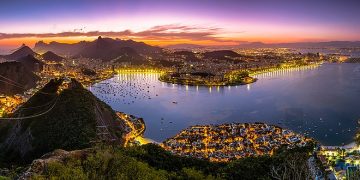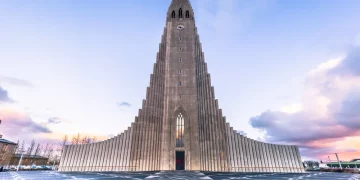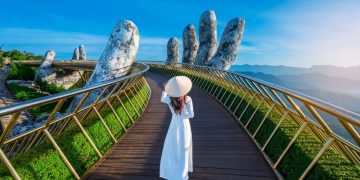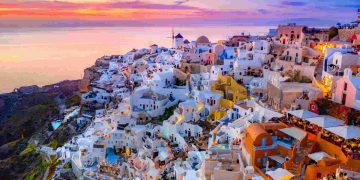Overview of Iceland’s Most Iconic Landscapes: Geysers, Glaciers, and Volcanoes
Iceland, often referred to as the land of fire and ice, is a country that epitomizes the raw and majestic power of nature. Its landscapes are as varied as they are awe-inspiring, with dramatic features such as geysers, glaciers, volcanoes, and waterfalls that seem to leap from the pages of a fairy tale. This natural beauty, coupled with the striking contrasts in the environment, has made Iceland a destination unlike any other, drawing travelers from across the globe who are eager to experience its wonders firsthand.
The Geysers of Iceland are perhaps the most iconic example of the country’s geothermal activity. The Great Geysir in Haukadalur Valley is the source of the word “geyser” and has been erupting for centuries, though it is now relatively dormant. However, nearby Strokkur, another geyser in the valley, erupts regularly, sending boiling water high into the air and making it one of the most popular natural attractions in the country. The sight of water being forced from the Earth’s depths with a mighty roar is a reminder of Iceland’s volcanic nature and the dynamic forces shaping the country’s landscape.
Next, Iceland’s glaciers form another central feature of the country’s topography. With glaciers covering approximately 10% of Iceland’s landmass, they serve as both awe-inspiring spectacles and reminders of the island’s cold, ancient past. Among the most famous glaciers are Vatnajökull, Europe’s largest ice cap, and Snæfellsjökull, a dormant volcano topped with a glacier that gained fame through Jules Verne’s novel Journey to the Center of the Earth. These glaciers are not only geological wonders but are crucial to the country’s ecosystem, feeding rivers that give life to the landscape.
Finally, Iceland’s volcanoes form the heart of the nation’s geology. With over 30 active volcanoes, Iceland is a geological hotspot that regularly reminds visitors of the Earth’s violent creation. The eruptions of Eyjafjallajökull in 2010 and Fimmvörðuháls in 2014 captivated the world, and while they caused significant disruption, they also highlighted the country’s resilience in the face of nature’s power. Volcanoes such as Hekla and Katla continue to intrigue both scientists and travelers, with their unpredictable activity making Iceland a unique destination for those looking to witness the planet’s most dramatic natural forces.
The Cultural Connection Between Iceland’s Natural Wonders and Its Folklore
What makes Iceland’s landscapes even more captivating is the deep cultural connection the Icelandic people share with their environment. Icelandic folklore is rich with tales and myths about the land, and its people have long revered the natural features that define their country. From trolls and elves to the belief in the powers of the volcanoes and glaciers, Iceland’s natural wonders are often seen as living entities that hold power over the people’s lives.
Geysers, for example, are frequently linked to the mythological stories of giants and magical beings. According to one Icelandic tale, a giantess once turned herself into a geyser to escape the pursuit of an angry king. Similarly, the Icelandic people have long believed that certain places are inhabited by elves and hidden people, or huldufólk. Many Icelanders still believe that the spirits of these hidden folk live in rocks, hills, and mountains across the country, and traditional stories about them have shaped the way people view their land.
Volcanoes also carry significant cultural meaning in Icelandic folklore. For centuries, people have seen the volcanoes as both destructive forces and symbols of life’s cyclical nature. Some Icelandic stories associate volcanoes with the wrath of the gods, and they are often considered to be the resting places of ancient giants or deities. There is also the belief that Hekla, one of Iceland’s most active volcanoes, is the gateway to Hell, a belief that originates from medieval Christian traditions. This mystical aura surrounding volcanoes continues to play a major role in Icelandic culture, influencing everything from local festivals to everyday beliefs.
Icelandic glaciers are similarly tied to folklore, with many of them seen as home to spirits or guardians of the land. Glaciers are often believed to be enchanted places where only the brave can venture. Tales of hidden treasures buried beneath the ice are not uncommon in Icelandic stories, fueling the country’s ongoing fascination with these frozen behemoths.
This blend of natural beauty and mythological connection makes Iceland a place where the landscape itself feels alive with stories and possibilities. The living, breathing nature of Iceland is intertwined with its folklore, offering visitors not only a chance to witness its unique landscapes but also a glimpse into the deep, mysterious stories that have been passed down through generations.

Best Places to Visit: Golden Circle, Blue Lagoon, and Vatnajökull
For those seeking to experience Iceland’s natural beauty and cultural significance firsthand, there are a few key places that should be on every traveler’s list. These locations showcase Iceland’s dramatic landscapes, while also offering a deep cultural connection to the land.
- Golden Circle
The Golden Circle is perhaps Iceland’s most famous tourist route, and for good reason. The route encompasses three of the country’s most popular natural attractions: Þingvellir National Park, Geysir, and Gullfoss. Þingvellir is an UNESCO World Heritage Site, known for being the site of Iceland’s first parliament and for its dramatic geological features, where the North American and Eurasian tectonic plates meet. The Geysir geothermal area, home to Strokkur, and the powerful Gullfoss waterfall are must-see locations for those wanting to experience Iceland’s raw natural beauty. The Golden Circle offers visitors a perfect snapshot of the country’s geological wonders and rich cultural heritage. - Blue Lagoon
The Blue Lagoon is one of Iceland’s most iconic destinations, known for its soothing mineral-rich waters surrounded by a dramatic lava field. While the Blue Lagoon is a more modern attraction, it is deeply tied to Iceland’s geothermal activity. The hot springs, fed by water from a nearby geothermal power plant, are rich in silica and sulfur, which many believe have healing properties. The Blue Lagoon represents the intersection of Iceland’s natural resources, modern industry, and its cultural heritage of bathing and relaxation. - Vatnajökull
For those seeking a more remote and wild experience, the Vatnajökull National Park is a must-visit destination. Vatnajökull is Europe’s largest ice cap and covers about 8% of Iceland’s landmass. The park is home to glaciers, ice caves, volcanoes, and waterfalls, making it a paradise for outdoor enthusiasts and adventurers. Visitors can explore the ice caves during the winter months or hike the glacier trails in the summer. The rugged beauty of Vatnajökull serves as a reminder of Iceland’s primal, untamed nature and its deep connection to the forces of fire and ice.
How Icelanders Celebrate Nature Through Festivals and Traditions
Icelanders have a long tradition of celebrating their natural environment, and the country’s festivals and customs are deeply connected to the landscape. These celebrations often mark the changing of the seasons, as well as significant cultural events, and provide insight into how the Icelandic people view their connection to the land.
- Þorrablót
One of Iceland’s oldest festivals, Þorrablót celebrates the midwinter feast and the traditions of the old Norse. The festival is dedicated to the ancient Icelandic tradition of honoring the gods and the land, and it is marked by the consumption of traditional foods like hákarl (fermented shark) and svið (boiled sheep’s head). The festival is a celebration of Icelandic history, folklore, and the land’s ability to provide for its people, no matter how harsh the environment. - Icelandic National Day
Held on June 17th, Icelandic National Day celebrates the country’s independence and cultural identity. The day features parades, music, and dancing, and it’s an opportunity for Icelanders to reflect on their connection to their land and heritage. This festival highlights the Icelandic pride in their environment, their culture, and their shared history. - The Icelandic Christmas Festival
Icelandic Christmas celebrations are steeped in folklore and nature. Known for their unique blend of old traditions and modern customs, Icelanders celebrate with elaborate feasts, the lighting of candles, and visits from the Yule Lads—mischievous trolls who bring gifts to children. Christmas in Iceland is deeply tied to the winter season, which is considered a time of reflection, rest, and connection to the natural world.
Tips for Experiencing Iceland’s Nature and Culture
When visiting Iceland, it’s important to immerse yourself fully in the country’s natural beauty and cultural heritage. Here are a few tips to make your experience memorable:
- Respect the Land
Iceland’s landscapes are fragile, so be sure to tread lightly. Stick to marked paths and be mindful of your environmental impact. Icelanders take great pride in preserving their land, so respecting nature is an essential part of visiting. - Embrace the Weather
Iceland’s weather can be unpredictable, so it’s important to be prepared for all conditions. Pack warm layers, waterproof clothing, and sturdy hiking boots. Embrace the ever-changing skies and enjoy the variety of weather that adds to Iceland’s charm. - Learn About the Folklore
Take time to learn about Icelandic folklore and traditions. Understanding the country’s myths and legends will enhance your experience, allowing you to connect more deeply with the landscapes and the people.
Conclusion
Iceland’s natural beauty is captivating, not just for its stunning landscapes but for the cultural connections that exist between the land and the people. From its geysers and glaciers to its volcanic peaks, Iceland is a place where nature and folklore coexist harmoniously, offering visitors a unique opportunity to explore both the physical and spiritual aspects of this extraordinary land. Whether you are hiking through the Golden Circle, soaking in the Blue Lagoon, or standing in awe beneath the shadow of Vatnajökull, Iceland will leave you with a deep respect for the natural world and the stories it has to tell.





















